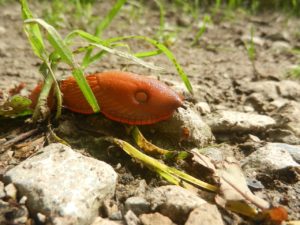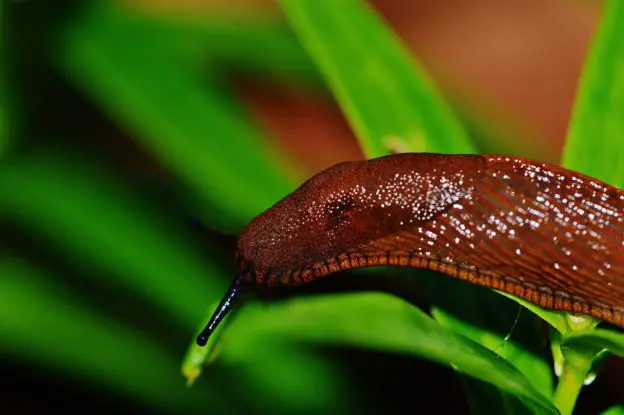There is a new predator in your garden and you should be prepared for all out war.
You work hard to prepare your soil to grow your plants and vegetables, you watch for slugs and snails during wet periods. Usually you can relax once the weather warms up as the slugs and snails keep to the shade and stay in underground…
…. Not any more the Spanish Slug invasion has begun.
The Spanish Slug Invasion
They arrived by stealth, and as we speak they are probably invading your plot, make no mistake, this is no joke. Something has to be done. So know your enemy.
What Are Spanish Slugs ?
The obvious answer, slugs from Spain. however this is inaccurate, although they are called Spanish slugs they probably originated in Western France (Daily Mail).
Spanish slugs Arion vulgaris are a relatively newcomer to the UK but are spreading fast, they are turning up all over the South Eastern counties of the United Kingdom. They vary in colour from bright orange to light brown and range in size from 8-15 cms.

Why is this a Problem?
Spanish slugs
- Have no natural predators as they produce so much slime that hedgehogs, frogs, and birds tend to leave them alone.
- Are much more prolific than native slugs (500 eggs per season compared with 150 native slugs eggs)
- Have evolved in hot, arid climates so the July / August heatwave causes them no problem. So when we should be relaxing our slug guard we no longer can.
- Will drive out native slugs due to their large size and high population density.
- Like all slugs they are hermaphrodites which means even on their own they can produce up to 500 eggs.
- Are very social creatures and eat in packs, capable of decimating a whole patch of lettuce in no time.
- Are omnivores eating :-
- All plant materials even plants that native slugs don’t touch
- Other slugs
- Dead animals
- Excrement
- Fungi
How Did They Get Here?
Spanish slugs were first identified in the UK in 2012 in Norwich and are believed to have entered the country in imported lettuce, cabbage, or as eggs in imported plant soil. Find out more at slugwatch.

Where Else Have They Invaded
Spanish slugs arrived in Norway in 1988 and have spread throughout the Scandinavian countries causing the Norwegian socialist left party to propose a “slug hour” where the whole population spend an hour hunting for and destroying Spanish slugs. On the island of Stord an all day slug hunting competition was backed by the VG newspaper.
HOW TO BEAT THE SPANISH SLUG
There are numerous ways to get rid of native slugs ranging from beer traps to slug pellets. None of these will work on the Spanish slug.According to sciencenordic:-
The only way to beat the Spanish slug is to collect them by hand and kill them.
I have found that the most satisfying way is to spike them on a skewer. If you are too squemish for this then collect them by hand and plunge them in a bucket of salt water or soapy water if you are really too sensitive.
Don’t let them die in vain
As with all slugs, Spanish slugs once dead can be added to the compost bin and will rot down like all other materials. Well in my opinion they’ve eaten your plants so they might as well help your next lot to grow.
Problems For The Future
As I see it we need to get the Spanish slug population under control before it’s too late. No one knows what would happen if they were to breed with native slugs, we could end up with a super slug the thought of that sends shivers down my spine. Maybe I shouldn’t have read the novel by Shaun Hutson back in the 80s.


They are in my garden postcode ox7 7ag. I go out several times a night collecting them and also at 6 am. There are so many I am frightened for our future crops. Could be worse than the potato blight as these eat everything. Very worrying.
I agree Susan all we can do is keep collecting them and hope for a harsh winter, as they don’t do too good with severe frosty conditions.